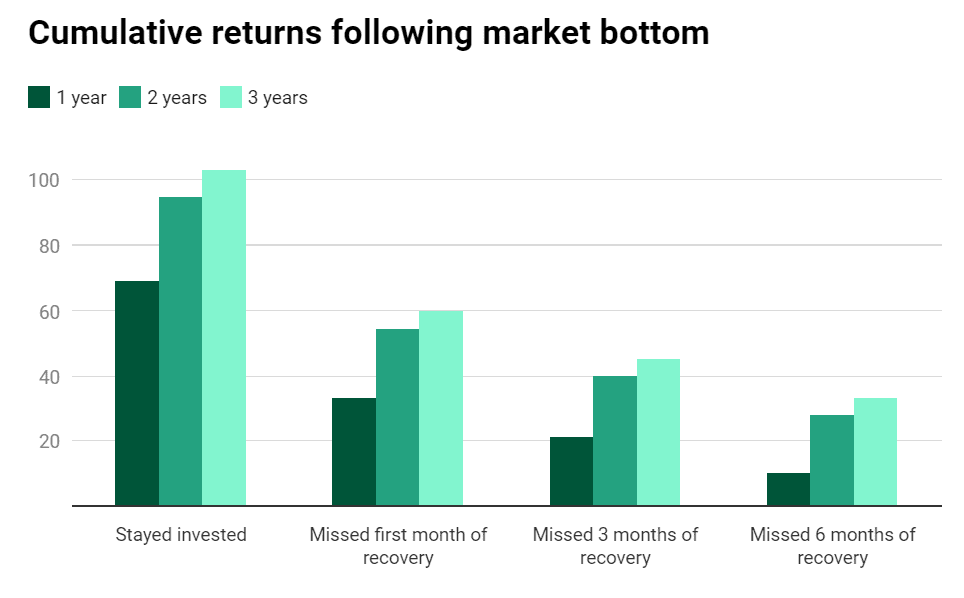
Since the stock market crash of March 2020, the S&P 500 has more than doubled in value. Such a phenomenal recovery has left some investors worried that a market correction is on the horizon.
After a choppy week of trading that ended Friday (24 Sept) with a mixed finish for major stock indexes, what’s going to happen next?
To be honest, there’s no way to predict when a market crash could happen, or how steep it could be. And for the most part, you shouldn’t tear apart your entire long-term investment strategy over one pullback.
Pullbacks, corrections and bear markets are all part and parcel of investing. Stock prices don’t go up every day, forever.
If you’re a long-term investor, all these short-term market movements are just noise. Here are five things that can help you block out the market chatter and concentrate on your long-term plan.
#1: Corrections are fairly common
A market correction – defined as a 10% decline in one of the major stock indices – can cause a lot of anxiety. Yet it’s not as rare you might think. Investment firm Guggenheim Funds looked at corrections of the S&P 500 since 1946 and found that market declines of 10% to 20% happen about 2.5 times each year on average.
But what’s important is that stock prices don’t stay down after a correction. Since 1974, the S&P 500 has risen an average of more than 8% one month after bottoming, and more than 24% one year later.
For long-term investors, the takeaway is that market pullbacks or corrections are a normal part of resetting stock valuations and investor expectations. Staying invested through periods of volatility is key to investment success.
#2: Things will get better
When you’re out of the market, your money isn’t exposed to the worst days of a correction. But this also means you’re missing the up days that should boost your returns over time.
During the 2008 global financial crisis, those who stayed invested in the S&P 500 recorded twice the returns of those who fled to cash for as little as three months.

Source: Syfe, CBOE
Just as it’s almost impossible to predict a market bottom, it’s very difficult to predict the start of a market’s recovery. By the time you re-enter the market, you may have already missed the best days of the recovery.
On the other hand, if you held on to your investment, you’re already in position to capture the gains when the market inevitably bounces back.
#3: A market crash has its advantages
Warren Buffett famously said that investors need to be “greedy when others are fearful, and fearful when others are greedy”. As other investors flee, his mantra suggests that a market decline could be a good time to cash in on lower equity prices.
If you have a long investment horizon, it’s worth buying more of your investments now at a lower price, and giving them time to rebound.
One way to do so is by dollar cost averaging (DCA). Simply put, you invest a certain amount into the market at regular intervals. This way, you can capitalise on lower prices now while avoiding the risk of buying all at once ahead of another market drop.
#4: Keep your emotions out of investing
During market corrections, your emotions can often be your own worst enemy. Hasty decisions made in panic or fear could result in expensive mistakes such as selling shares at a loss instead of waiting for a market upturn.
So ignore market fears and always think about the reasons why you picked your investments in the first place.
Better yet, resist the urge to check your portfolio daily. Watching your investments go up and down do nothing but cause greater worry.
#5: Think long term
Over any 20-year period, the US stock market has never lost money. The average annual return for any 20-year period stands at about 6.7%.
As a long-term investor, it shouldn’t matter whether or not a correction is in the cards. Headlines warning of an imminent stock market crash do not change long-term fundamentals, but they can cause you to panic and make bad decisions.
The next time the market gets choppy, take a deep breath and remember that your best strategy is to stay invested and not panic. With the right mindset, you’ll be able to overcome any market ups and downs and emerge more resilient than you were before.



You must be logged in to post a comment.